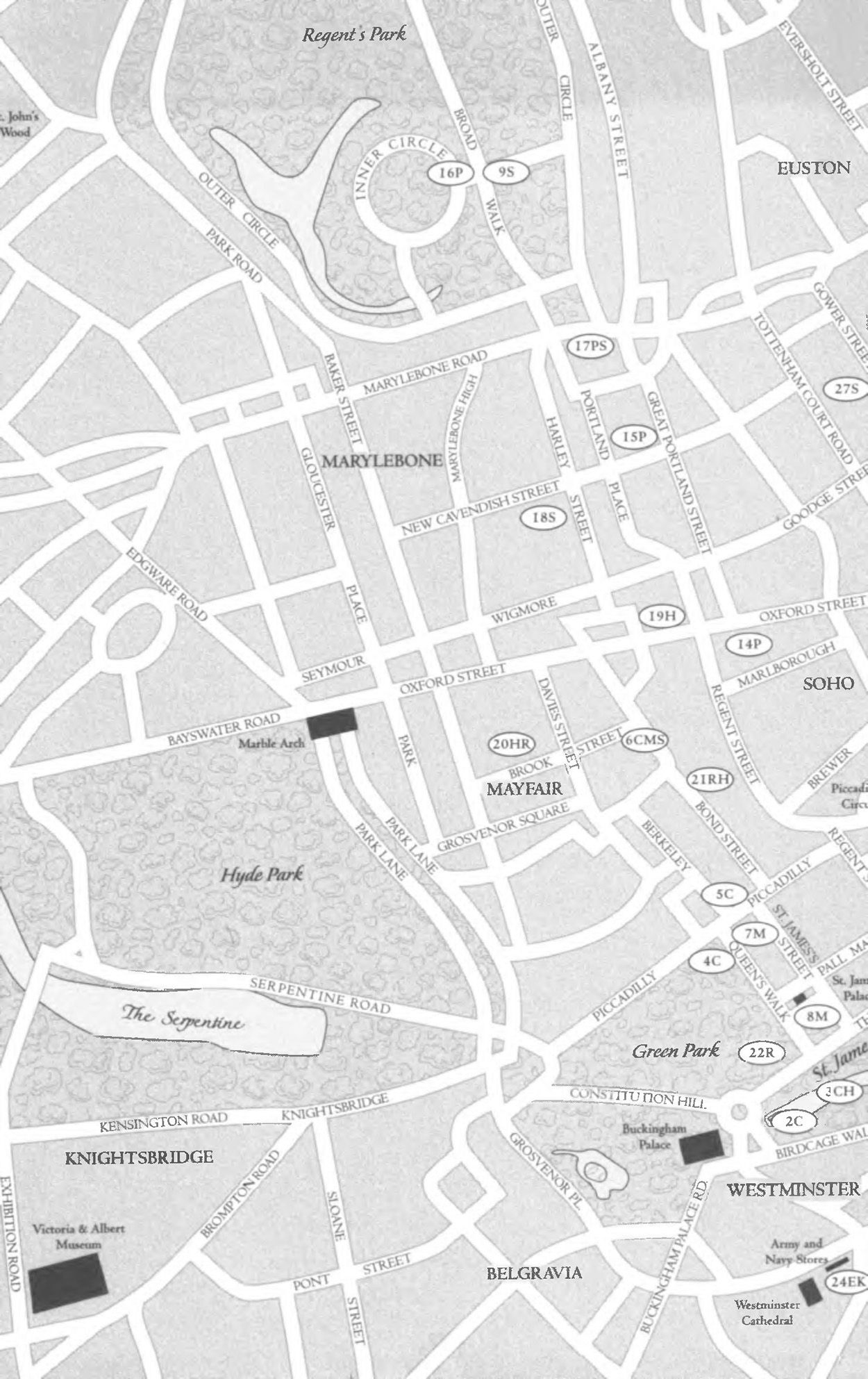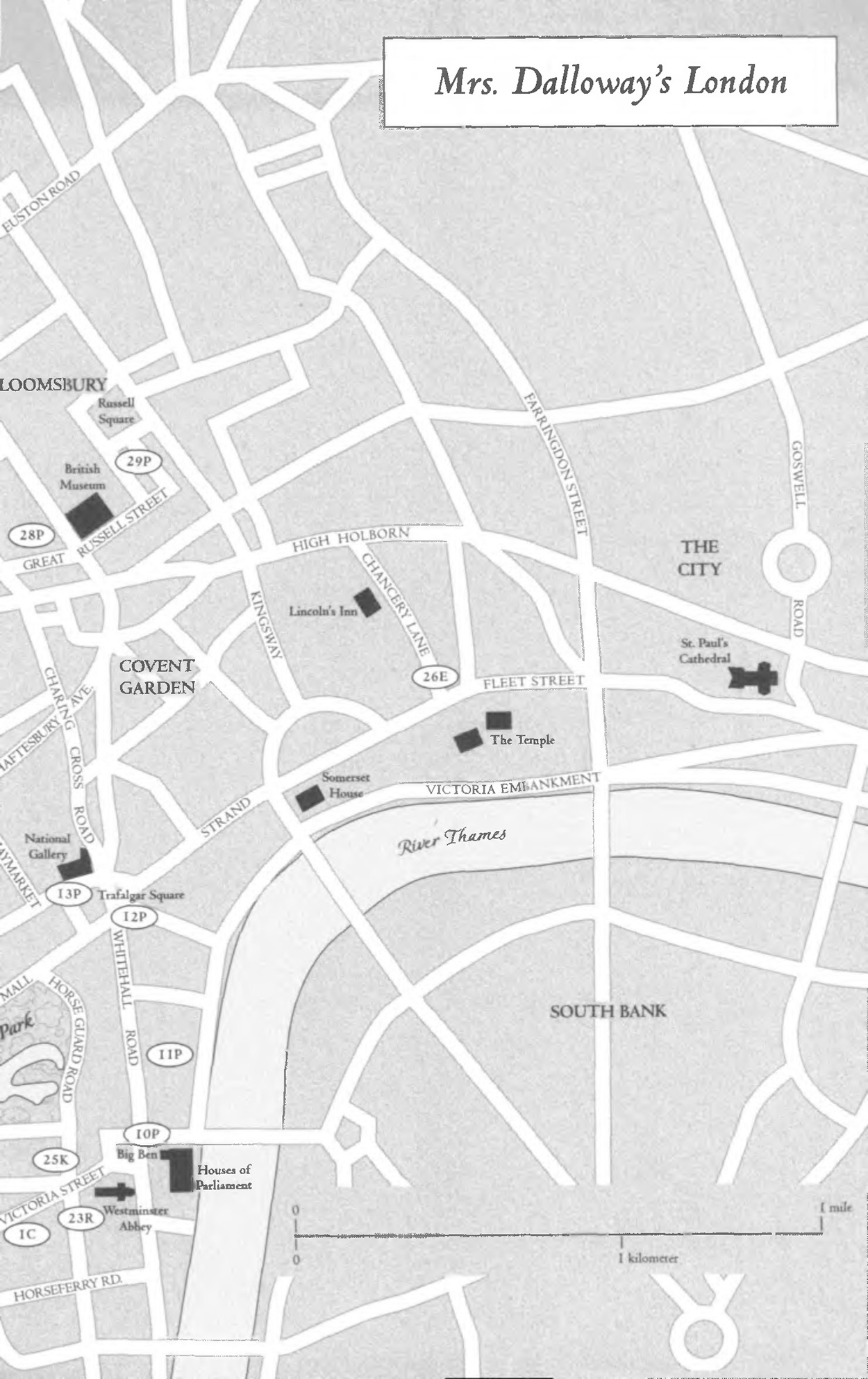Mrs. Dalloway (Annotated)
Read Mrs. Dalloway (Annotated) Online
Authors: Virginia Woolf


Suggestions for Further Reading: Virginia Woolf
Suggestions for Further Reading: Mrs. Dalloway


Copyright 1925 by Harcourt, Inc.
Copyright renewed 1953 by Leonard Woolf
Annotated Edition copyright © 2005 by Harcourt, Inc.
Preface copyright © 2005 by Mark Hussey
Introduction copyright © 2005 by Bonnie Kime Scott
Â
All rights reserved. No part of this publication may be reproduced or transmitted in any form or by any means, electronic or mechanical, including photocopy, recording, or any information storage and retrieval system, without permission in writing from the publisher.
Â
For information about permission to reproduce selections from this book, write to Permissions, Houghton Mifflin Harcourt Publishing Company, 215 Park Avenue South, New York, New York 10003.
Â
Â
The Library of Congress has cataloged the print edition as follows:
Woolf, Virginia, 1882â1941.
Mrs. Dalloway/Virginia Woolf; annotated and with an introduction
by Bonnie Kime Scott; Mark Hussey, general editor.â1st Harvest ed.
p. cm.â(A Harvest Book)
Includes bibliographical references.
1. Triangles (Interpersonal relations)âFiction. 2. Middle aged womenâFiction. 3. London (England)âFiction. 4. Suicide victimsâFiction. 5. Married womenâ Fiction. 6. First lovesâFiction. 7. PartiesâFiction. 8. RegretâFiction.
I. Scott, Bonnie Kime, 1944â II. Title. III. Series.
PR6045.O72M7 2005
823'.912-dc22 2005003378
ISBN
978-0-15-603035-9
Â
e
ISBN
978-0-544-3503-9
v1.0215
REFACE
: V
IRGINIA
W
OOLF
V
IRGINIA
W
OOLF
was born into what she once described as “a very communicative, literate, letter writing, visiting, articulate, late nineteenth century world.” Her parents, Leslie and Julia Stephen, both previously widowed, began their marriage in 1878 with four young children: Laura (1870â1945), the daughter of Leslie Stephen and his first wife, Harriet Thackeray (1840â1875); and George (1868â1934), Gerald (1870â1937), and Stella Duckworth (1869â1897), the children of Julia Prinsep (1846â1895) and Herbert Duckworth (1833â1870). In the first five years of their marriage, the Stephens had four more children. Their third child, Virginia, was born in 1882, the year her father began work on the monumental
Dictionary of National Biography
that would earn him a knighthood in 1902. Virginia, her sister, Vanessa (1879â1961), and brothers, Thoby (1880â1906) and Adrian (1883â1948), all were born in the tall house at 22 Hyde Park Gate in London where the eight children lived with numerous servants, their eminent and irascible father, and their beautiful mother, who, in Woolf's words, was “in the very centre of that great Cathedral space that was childhood.”
Woolf's parents knew many of the intellectual luminaries of the late Victorian era well, counting among their close friends novelists such as George Meredith, Thomas Hardy, and Henry James. Woolf's great-aunt Julia Margaret Cameron was a pioneering photographer who made portraits of the poets Alfred
Tennyson and Robert Browning, of the naturalist Charles Darwin, and of the philosopher and historian Thomas Carlyle, among many others. Beginning in the year Woolf was born, the entire Stephen family moved to Talland House in St. Ives, Cornwall, for the summer. There the younger children would spend their days playing cricket in the garden, frolicking on the beach, or taking walks along the coast, from where they could look out across the bay to the Godrevy lighthouse.
The early years of Woolf's life were marred by traumatic events. When she was thirteen, her mother, exhausted by a punishing schedule of charitable visits among the sick and poor, died from a bout of influenza. Woolf's half sister Stella took over the household responsibilities and bore the brunt of their self-pitying father's sorrow until she escaped into marriage in 1897 with Jack Hills, a young man who had been a favorite of Julia's. Within three months, Stella (who was pregnant) was dead, most likely from peritonitis. In this year, which she called “the first really
lived
year of my life,” Woolf began a diary. Over the next twelve years, she would record in its pages her voracious reading, her impressions of people and places, feelings about her siblings, and events in the daily life of the large household.
1
In addition to the premature deaths of her mother and half sister, there were other miseries in Woolf's childhood. In autobiographical writings and letters, Woolf referred to the sexual abuse she suffered at the hands of her two older half brothers, George and Gerald Duckworth. George, in one instance, explained his behavior to a family doctor as his effort to comfort his half sister for the fatal illness of their father. Sir Leslie died
from cancer in 1904, and shortly thereafter the four Stephen childrenâVanessa, Virginia, Thoby, and Adrianâmoved together to the then-unfashionable London neighborhood of Bloomsbury. When Thoby Stephen began to bring his Cambridge University friends to the house on Thursday evenings, what would later become famous as the “Bloomsbury Group” began to form.
In an article marking the centenary of her father's birth, Woolf recalled his “allowing a girl of fifteen the free run of a large and quite unexpurgated library”âan unusual opportunity for a Victorian young woman, and evidence of the high regard Sir Leslie had for his daughter's intellectual talents. In her diary, she recorded the many different kinds of books her father recommended to herâbiographies and memoirs, philosophy, history, and poetry. Although he believed that women should be “as well educated as men,” Woolf's mother held that “to serve is the fulfilment of women's highest nature.” The young Stephen children were first taught at home by their mother and father, with little success. Woolf herself received no formal education beyond some classes in Greek and Latin in the Ladies' Department of King's College in London, beginning in the fall of 1897. In 1899 she began lessons in Greek with Clara Pater, sister of the renowned Victorian critic Walter Pater, and in 1902 she was tutored in the classics by Janet Case (who also later involved her in work for women's suffrage). Such homeschooling was a source of some bitterness later in her life, as she recognized the advantages that derived from the expensive educations her brothers and half brothers received at private schools and university. Yet she also realized that her father's encouragement of her obviously keen intellect had given her an eclectic foundation. In the early years of Bloomsbury, she reveled in the opportunity to discuss ideas with her brother Thoby and his friends, among whom were Lytton Strachey, Clive Bell, and
E. M. Forster. From them, she heard, too, about an intense young man named Leonard Woolf, whom she had met briefly when visiting Thoby at Cambridge, and also in 1904 when he came to dinner at Gordon Square just before leaving for Ceylon (now called Sri Lanka), where he was to administer a far-flung outpost of the British Empire.
Virginia Woolf's first publications were unsigned reviews and essays in an Anglo-Catholic newspaper called the
Guardian
, beginning in December 1904. In the fall of 1906, she and Vanessa went with a family friend, Violet Dickinson, to meet their brothers in Greece. The trip was spoiled by Vanessa's falling ill, and when she returned to London, Virginia found both her brother Thobyâwho had returned earlierâand her sister seriously ill. After a misdiagnosis by his doctors, Thoby died from typhoid fever on November 20, leaving Virginia to maintain a cheerful front while her sister and Violet Dickinson recovered from their own illnesses. Two days after Thoby's death, Vanessa agreed to marry his close friend Clive Bell.
While living in Bloomsbury, Woolf had begun to write a novel that would go through many drafts before it was published in 1915 as
The Voyage Out
. In these early years of independence, her social circle widened. She became close to the art critic Roger Fry, organizer of the First Post-Impressionist Exhibition in London in 1910, and also entered the orbit of the famed literary hostess Lady Ottoline Morrell (cruelly caricatured as Hermione Roddice in D. H. Lawrence's 1920 novel
Women in Love
). Her political consciousness also began to emerge. In 1910 she volunteered for the movement for women's suffrage. She also participated that February in a daring hoax that embarrassed the British Navy and led to questions being asked in the House of Commons: She and her brother Adrian, together with some other Cambridge friends, gained access to a secret warship by dressing up and posing as the Emperor of Abyssinia and his
retinue. The “Dreadnought Hoax” was front-page news, complete with photographs of the phony Ethiopians with flowing robes, blackened faces, and false beards.
To the British establishment, one of the most embarrassing aspects of the Dreadnought affair was that a woman had taken part in the hoax. Vanessa Bell was concerned at what might have happened to her sister had she been discovered on the ship. She was also increasingly worried about Virginia's erratic health, and by the early summer 1910 had discussed with Dr. George Savage, one of the family's doctors, the debilitating headaches her sister suffered; Dr. Savage prescribed several weeks in a nursing home. Another element in Vanessa's concern was that Virginia was twenty-eight and still unmarried. Clive Bell and Virginia had, in fact, engaged in a hurtful flirtation soon after the birth of Vanessa's first child in 1908. Although she had been proposed to twice in 1909 and once in 1911, Virginia had not taken these offers very seriously.
Dropping by Vanessa's house on a July evening in 1911, Virginia met Leonard Woolf, recently back on leave from Ceylon. Soon after this, Leonard became a lodger at the house Virginia shared with Adrian, the economist John Maynard Keynes, and the painter Duncan Grant. Leonard decided to resign from the Colonial Service, hoping that Virginia would agree to marry him. After some considerable hesitation, she did, and they married in August 1912.
By the end of that year, Woolf was again suffering from the tremendous headaches that afflicted her throughout her life, and in 1913 she was again sent to a nursing home for what was then called a “rest cure.” In September of that year, she took an overdose of a sleeping drug and was under care until the following spring. In early 1915 she suffered a severe breakdown and was ill throughout most of the year in which her first novel was published.
Despite this difficult beginning, Virginia and Leonard Woolf's marriage eventually settled into a pattern of immense productivity and mutual support. Leonard worked for a time for the Women's Cooperative Guild, and became increasingly involved with advising the Labour Party and writing on international politics, as well as editing several periodicals. Virginia began to establish herself as an important novelist and influential critic. In 1917 the Woolfs set up their own publishing house, the Hogarth Press, in their home in Richmond. Their first publication was
Two Stories
âLeonard's “Three Jews” and Virginia's experimental “The Mark on the Wall.” They had decided to make their livings by writing, and in 1919, a few months before Woolf's second novel,
Night and Day
, was published, they bought a cottage in the village of Rodmell in Sussex. After moving back into London from Richmond in 1923, Woolf would spend summers at Monk's House, returning to the social whirl of the city in the fall.
